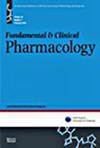Insights into nanostructured lipid carriers of etoricoxib for mitigating radiation-induced lung inflammation and exploring anti-inflammatory mechanisms in rats
Abstract
Background
Radiation exposure can cause inflammation, which etoricoxib (ET), an anti-inflammatory drug, could potentially mitigate.
Objective
This study aimed to evaluate the potential effectiveness of etoricoxib-loaded nanostructured lipid carriers (ET-NLCs) in mitigating radiation-induced acute lung inflammation in rats.
Methods
Thirty-six rats were divided into six groups. Group 1 (C): control; group 2 (ET): normal rats given ET (10 mg/kg) orally for 14 days; group 3 (ET-NLC): normal rats administered ET-NLCs orally (10 mg/kg) for 14 days. Group 4 (R): rats exposed to 6 Gy whole-body gamma radiation, untreated thereafter to induce lung inflammation and injury. Group 5 (ET-R), irradiated rats, were administered ET (10 mg/kg) orally daily for 14 days. Group 6 (ET-NLC-R), irradiated rats, were administered ET-NLCs (10 mg/kg) orally daily for 14 days. Molecular, biochemical, and histopathological analyses were performed to assess inflammation, apoptosis, oxidative stress, and lung tissue architecture.
Results
Radiation exposure led to a 1053% increase in Bax expression and an 81.5% decrease in Bcl-2, indicating heightened apoptosis. ET-NLCs treatment reversed these effects, reducing Bax by 59.9% and increasing Bcl-2 by 337.4%. Additionally, ET-NLCs reduced caspase-3 and caspase-8 activation by 54.5% and 62.9%, respectively, compared to radiation exposure alone. Furthermore, ET-NLCs demonstrated potent anti-inflammatory effects by reducing interleukin-6 (IL-6) and tumor necrosis factor-alpha (TNF-α) levels by 49% and 39%, respectively, compared to the irradiated group. Radiation increased malondialdehyde (MDA) levels by 388%, indicating oxidative damage, and suppressed antioxidant enzymes such as catalase (CAT), glutathione peroxidase (GPX), and superoxide dismutase (SOD). ET-NLC treatment decreased MDA levels and increased CAT, GPX, and SOD by 35.7%, 4766.7%, and 765.9%, respectively, restoring antioxidant balance. Radiation reduced surfactant protein (SP-D) levels to 4.9% of control values, but ET-NLCs treatment restored them to 14%. Histopathological analysis revealed that radiation-exposed lungs showed thickened inter-alveolar septa, emphysematous areas, and inflammatory infiltration. ET-NLCs treatment exhibited only mild thickening and limited inflammatory cell infiltration, suggesting significant improvement in lung architecture.
Conclusions
Based on these results, NLCs are one of the most promising ways to deliver anti-inflammatory drugs for treating lung damage caused by radiation.

 求助内容:
求助内容: 应助结果提醒方式:
应助结果提醒方式:


